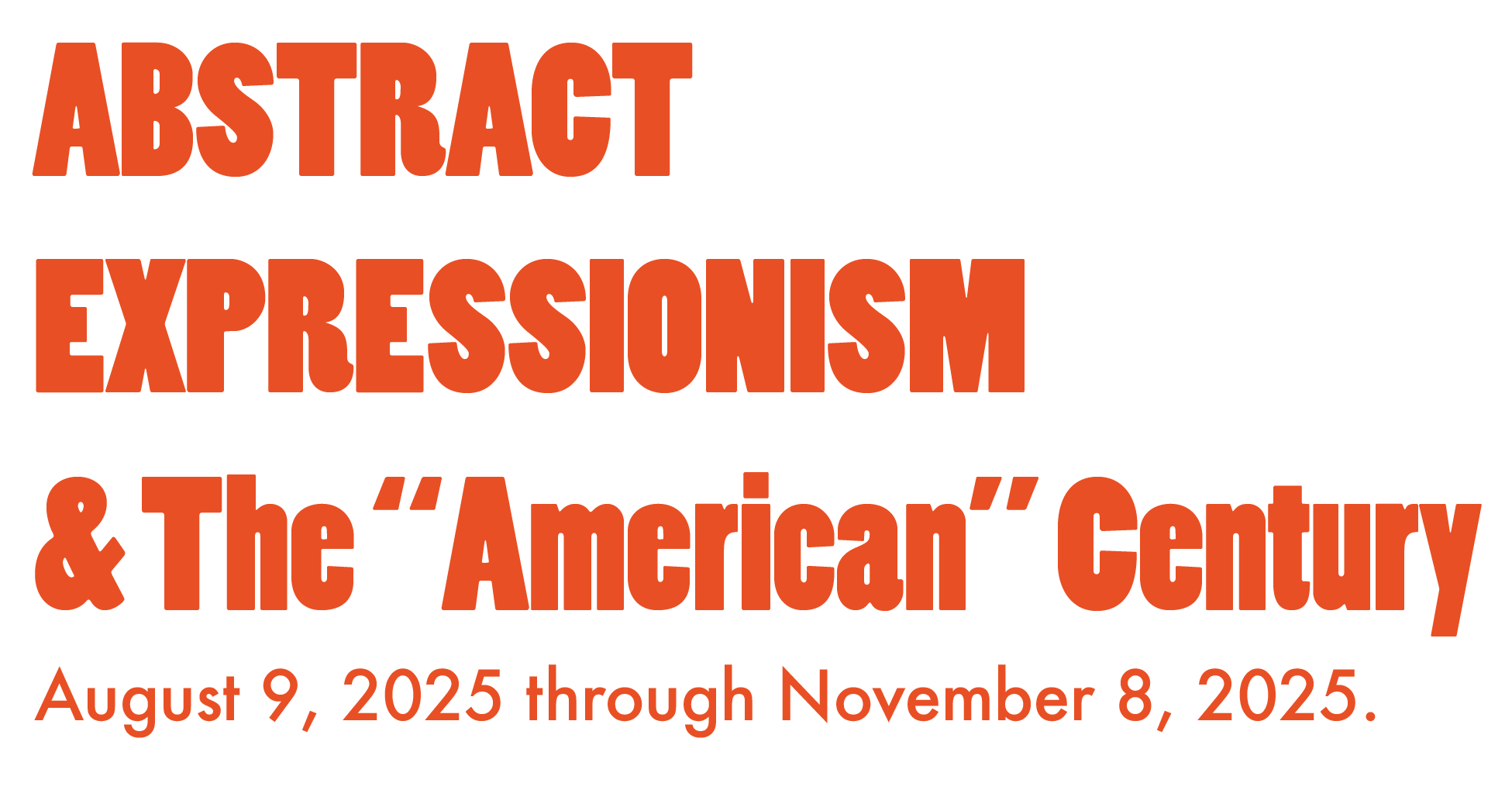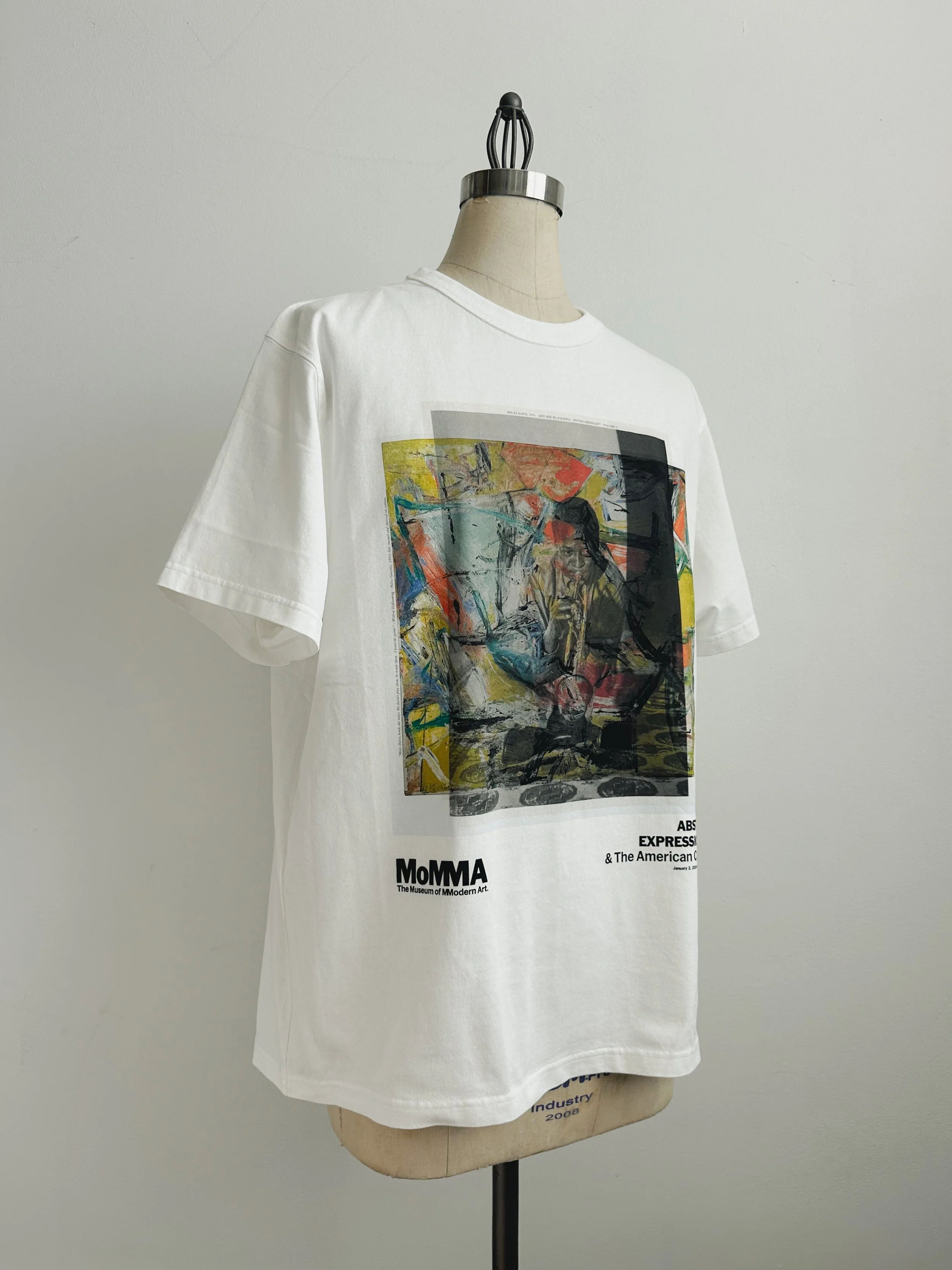
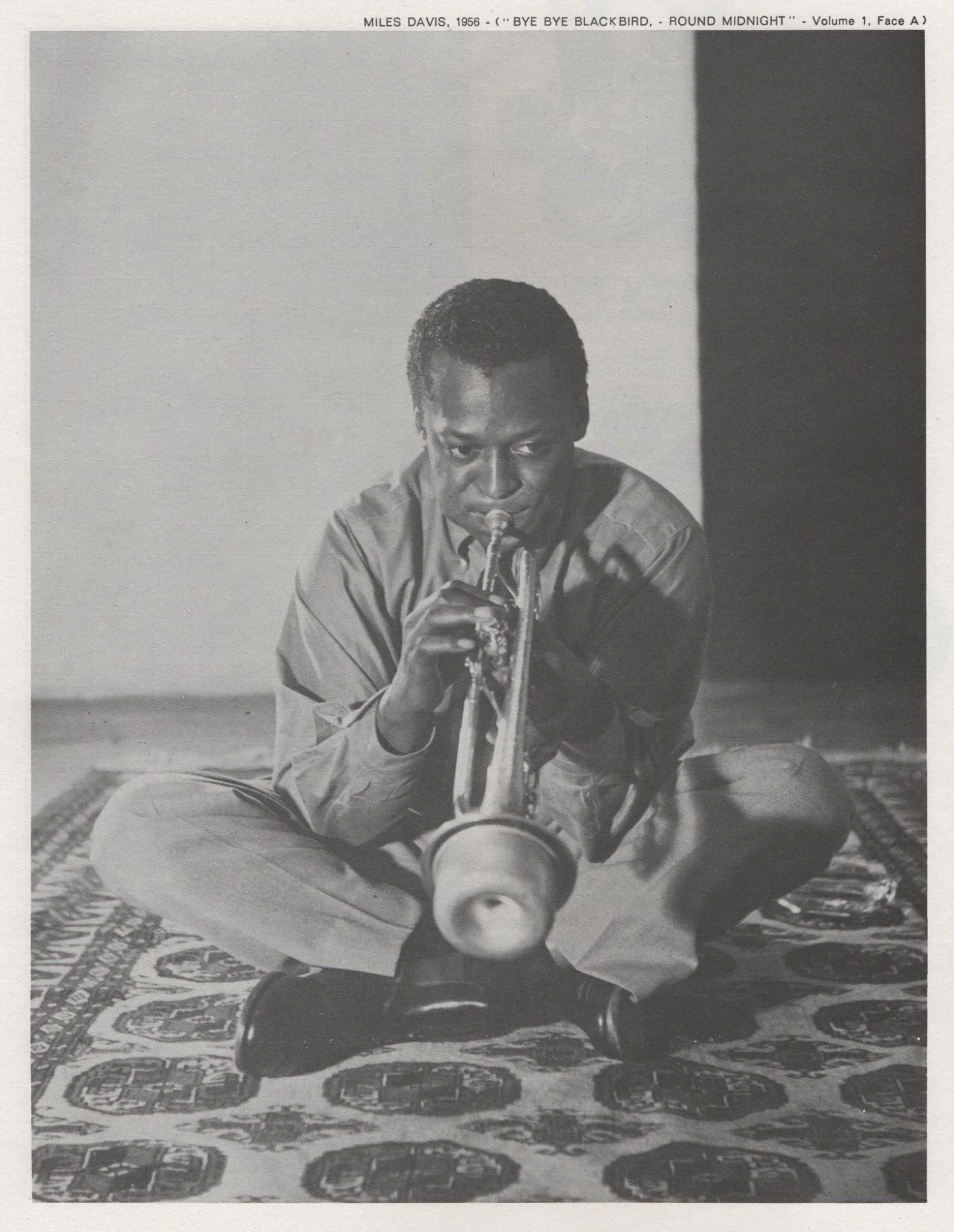
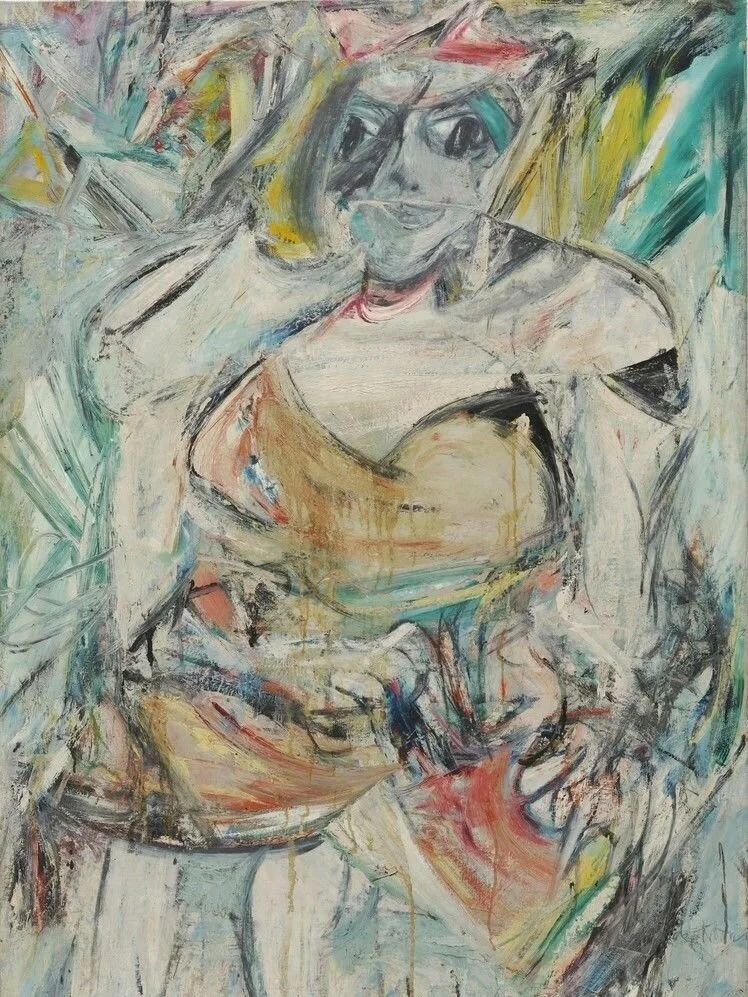
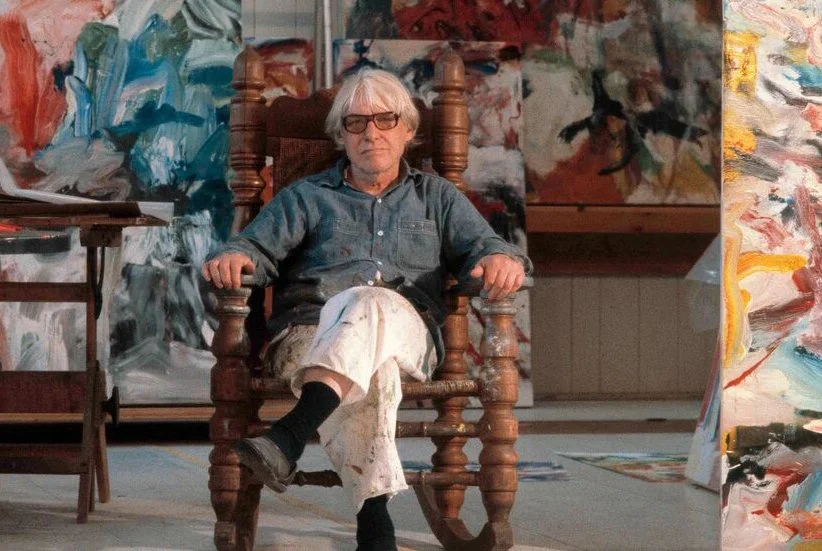
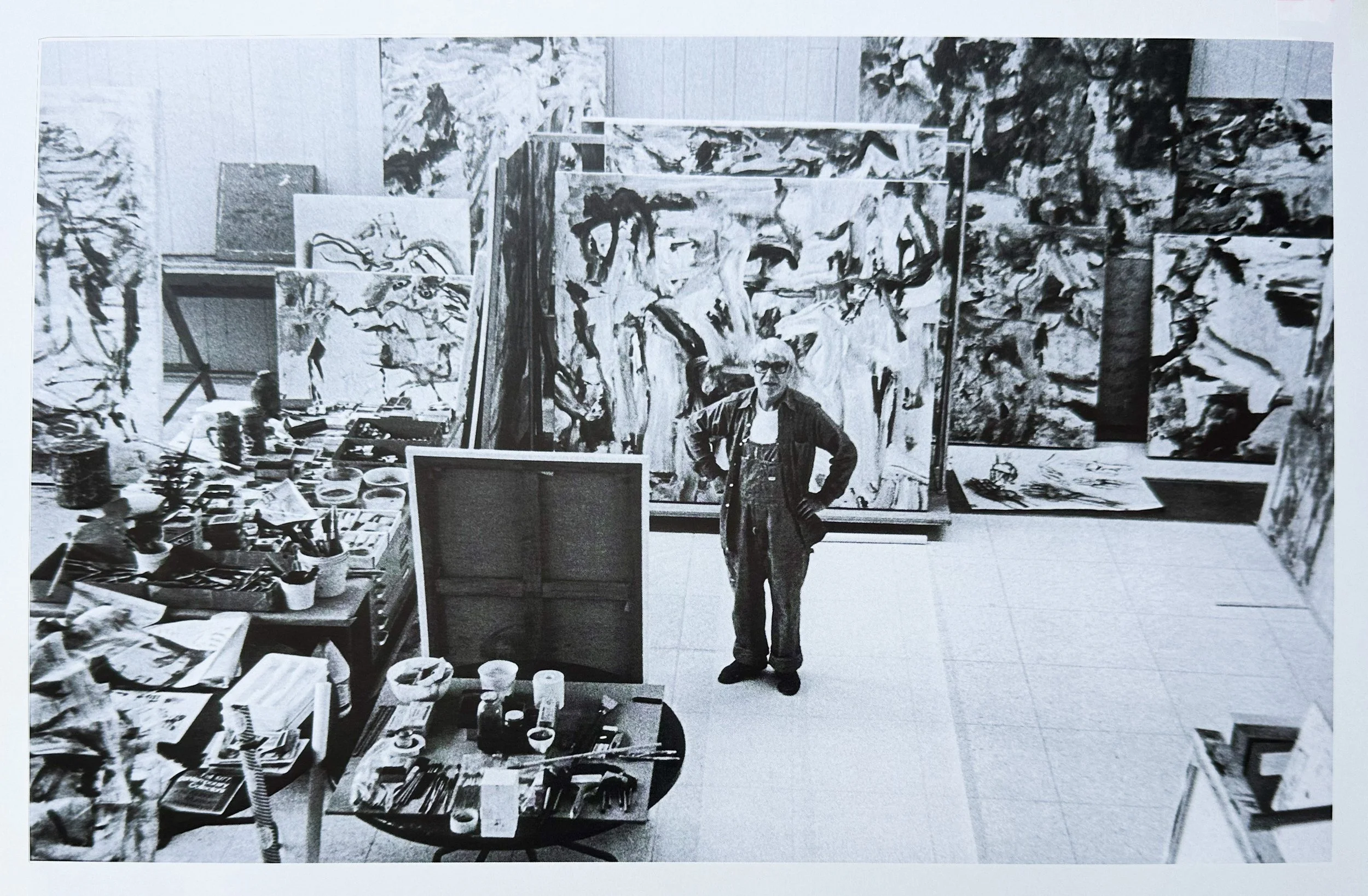
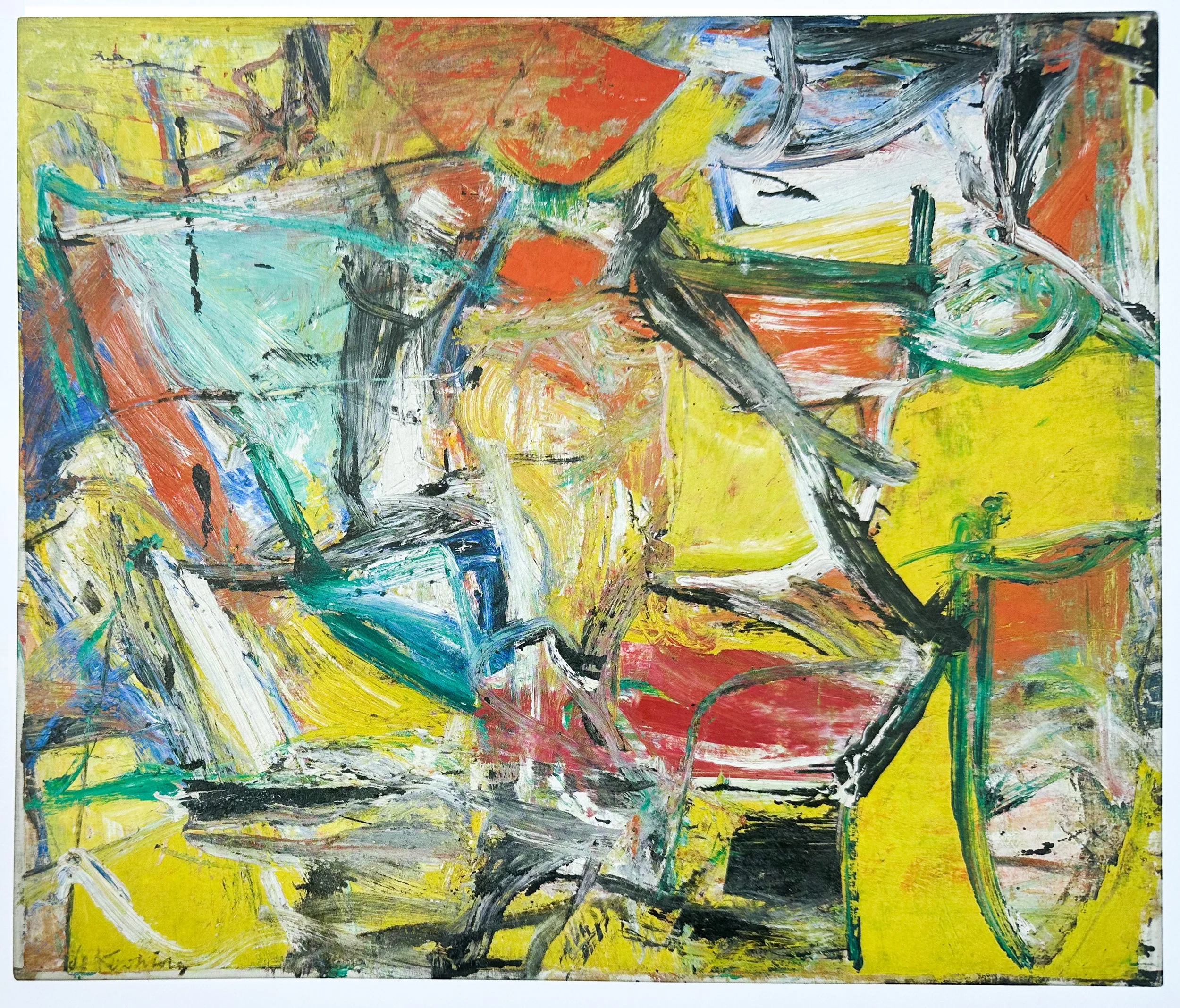
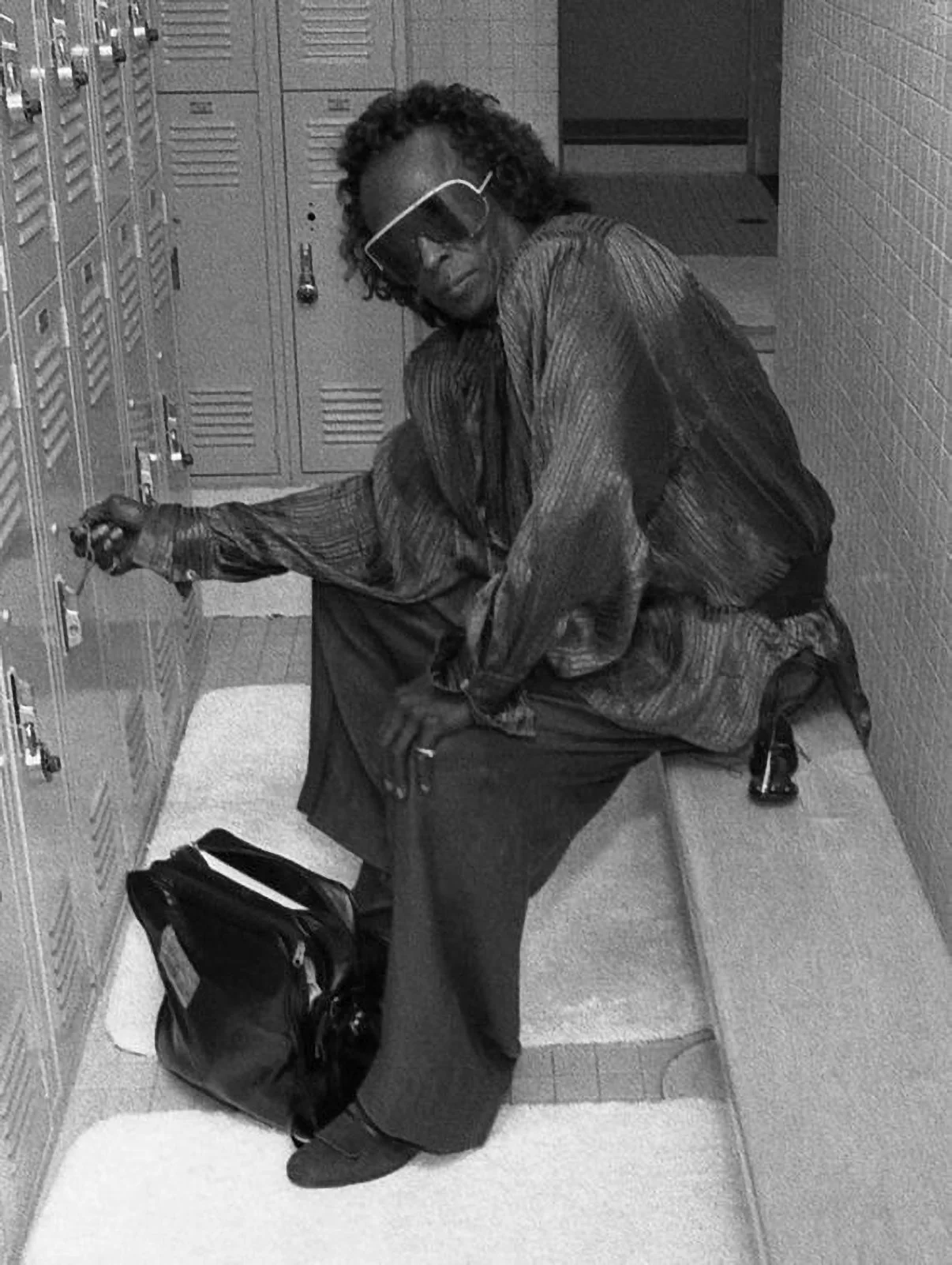
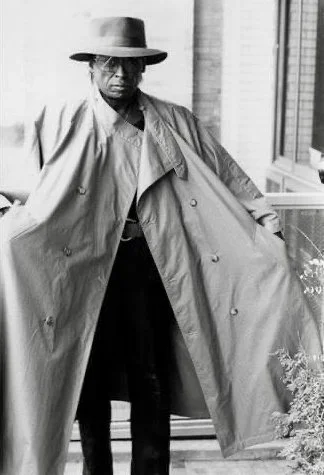
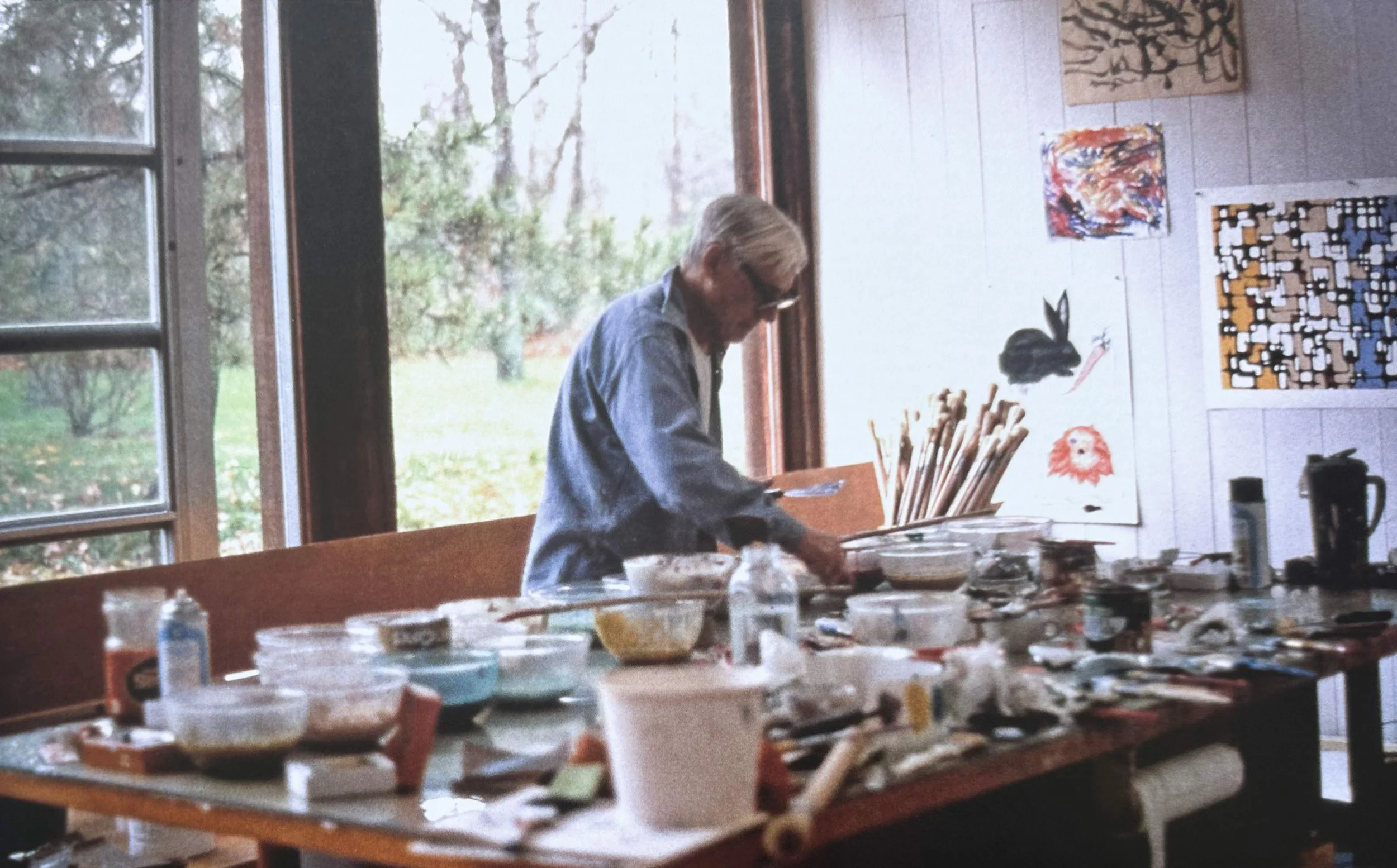


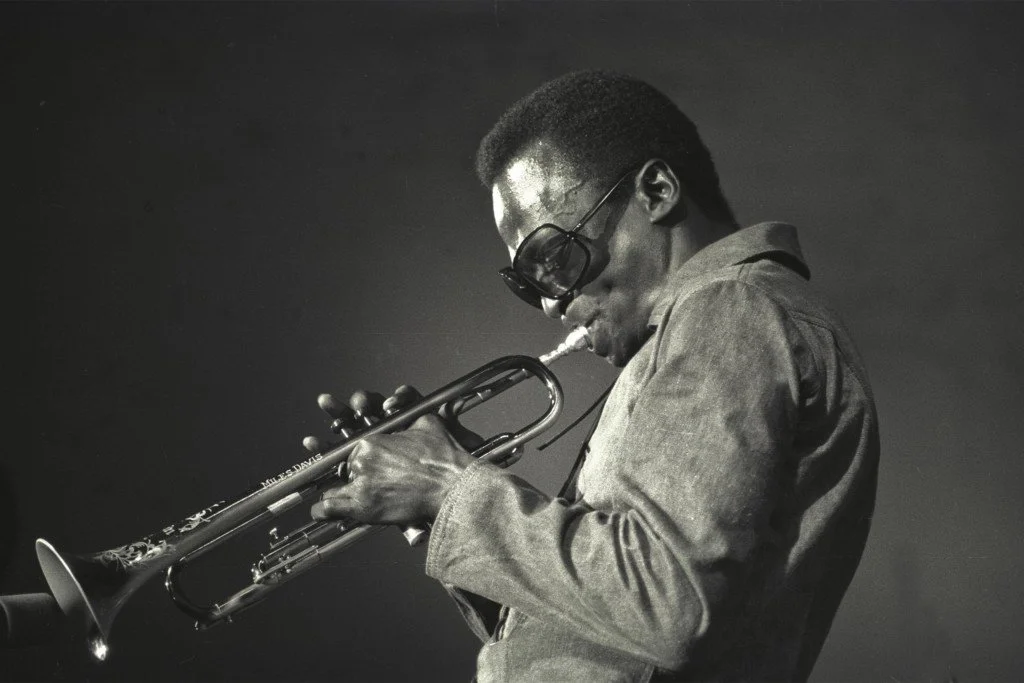
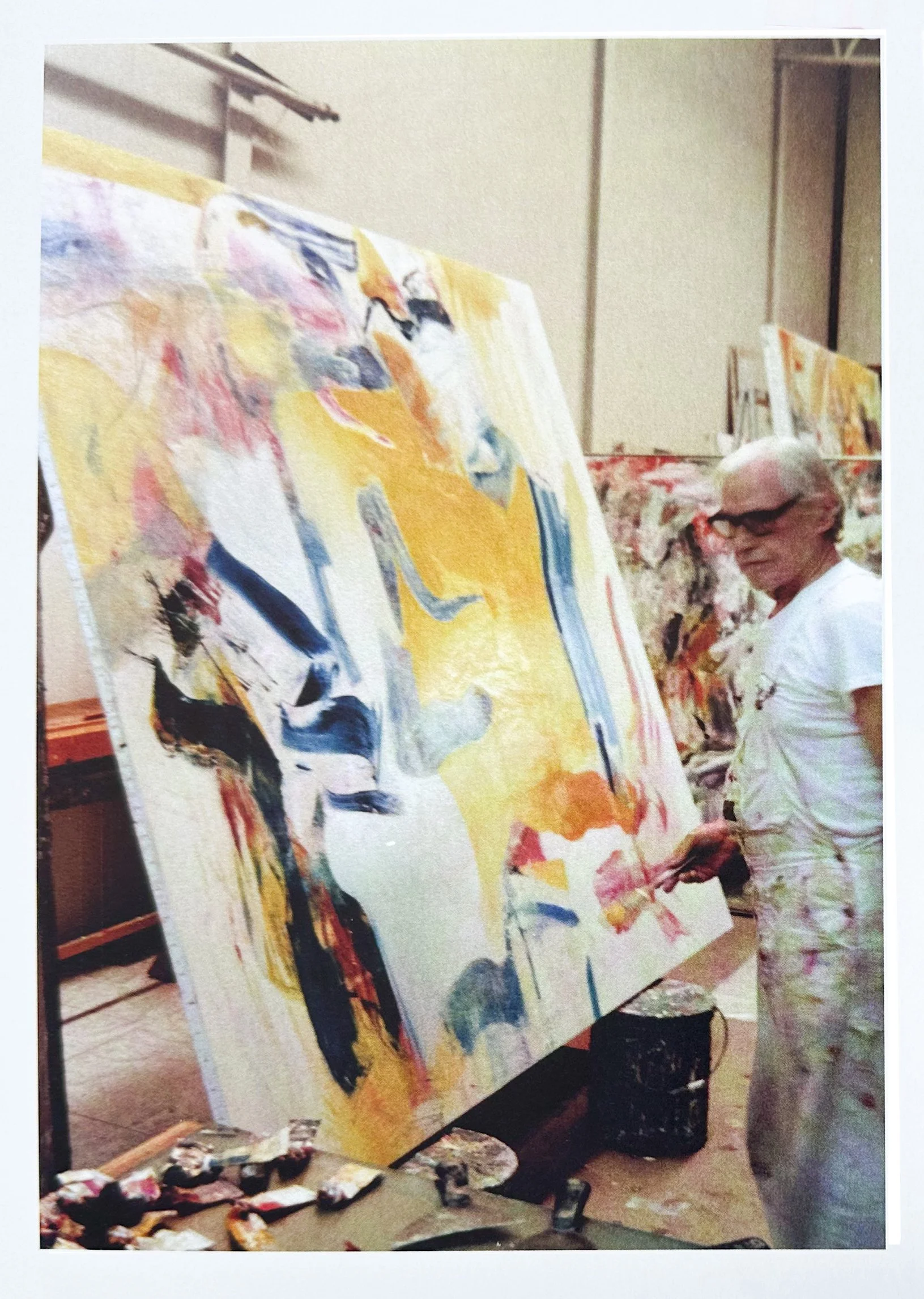
1) Miles Davis, press image, 1956; 2) Woman II, Willem De Kooning, 1952,; 3) De Kooning seated in studio, 1972; 4) Miles Davis at his NY home. 1984; 5) Police Gazzette, Willem De Kooning, 1955. Second row — 1) De Kooning in his studio, New York, 1981; 2) Miles Davis at the gym, NYC, 1985; 3) De Kooning in his studio, 1977; 4) Miles Davis performancel, 1969; 5) Willem De Kooning in his studio, East Hampton, NY, 1981.
“Miles Davis bends the notes. He doesn’t play them, he bends them. I bend the paint.”
-Willem DeKoonig
When the visceral experience of the moment fades into the past, and historians and institutions step in to maintain society‘s connections to history, but fail, what are the rest of us left to do?When Jackson Pollock went on musical binges that would, as his partner Lee Krasner described, "shake the house with the sounds of Jazz for days," was he listening passively, or absorbing jazz's improvisational approach in a way that would later inform his own freeform visual art?
Willem DeKooning referenced Miles Davis's work as a way to describe his own: "Miles Davis bends the notes. He doesn't play them, he bends them. I bend the paint." Would he have done this if the comparison was not important to him?Souvenir Shop
“Abstract Expressionism & The American Century” (NY Show) Souvenir T-Shirt, 2025. Digital pigment print with hand finishing on 100% cotton t-shirt.
Jazz's influence clearly reached these two titans of American art, but it also went much further.Decades before the Abstract Expressionists had begun their movement, Jazz musicians were creating soundscapes that communicated the power of free, abstracted expression. Jazz became so well received internationally that in the 1950’s the State Department began promoting and funding tours that featured Jazz greats like Dizzy Gillespie and Louis Armstrong. Ironically, the tours sold freedom abroad, but when these figures returned home, they, and their communities were still treated as second class citizens . Jazz, and Black Music more broadly, has come to represent one of the American ideals – of power springing from freedom of expression. “Abstract Expressionism & The American Century” Souvenir Poster, 2025. 22" X 29" - archival digital print on 340 gsm, textured, matte, acid-free archival paper.
In this moment, when voices are being selectively silenced, and histories that include marginalized people are downplayed and replaced with stories more convenient to the re-establishment of old hierarchies, how do those of us who are not historians or curators highlight the stories that fade from cultural memory? Is there a real show happening at the MoMA, SFMoMA or any other museum? No, this is it. Abstraction Expressionism and the American Century has been staged to prompt re-examinations of cultural hierarchies. One of the goals of this project is for its "souvenirs" (bootlegs) to enter the public space and inspire inquiry that challenges the “pop-culture-ized” histories of American arts and culture. -©SS’25Souvenir Shop
“Abstract Expressionism & The American Century” (SF Show) Souvenir T-Shirt, 2025. Digital pigment print with hand finishing on 100% cotton t-shirt.
“Abstract Expressionism & The American Century” Souvenir Poster, 2025. 22" X 29" - archival digital print on 340 gsm, textured, matte, acid-free archival paper.
“Jazz is the big brother of Revolution.
Revolution follows it around.”
Miles DaviS At The Health Club, U.N. NYC, 1985.
“This is Real.”
Contemporary Mythos #3 - The Living Myth. Proposal for a piece. Digital Collage. 2025.
Contemporary Mythos #3 - The Living Myth. Proposal for a piece. Digital Collage. 2025.

